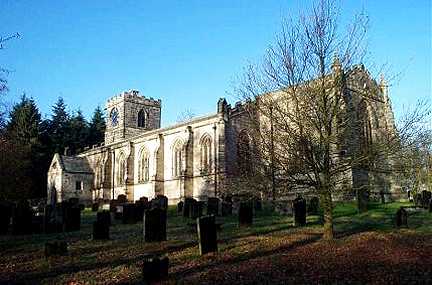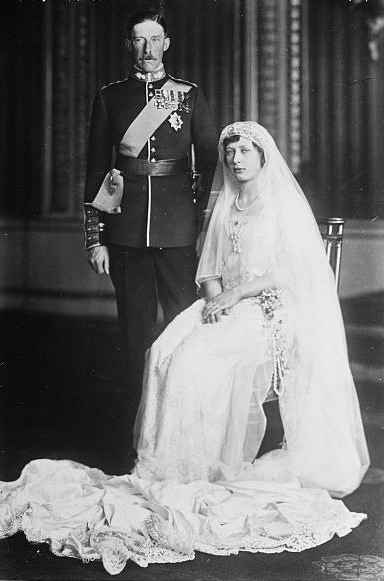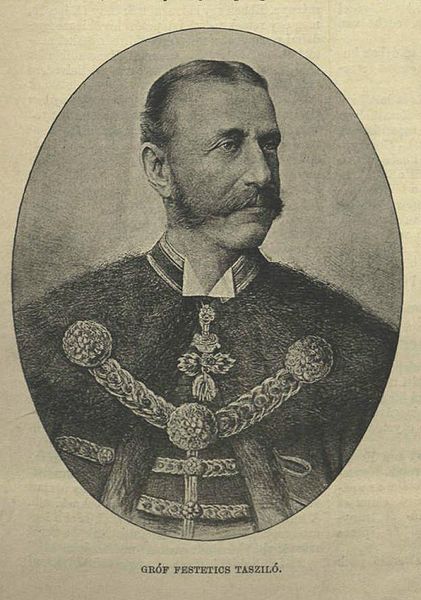by Susan Flantzer © Unofficial Royalty 2013
Embed from Getty Images
The first grandchild of King George V and Queen Mary of the United Kingdom and the first cousin of Queen Elizabeth II, The Honorable George Henry Hubert Lascelles was born on February 7, 1923, at Chesterfield House in London, England. At the time of his birth, he was sixth in the line of succession, after the four surviving sons of King George V and his mother. His mother was Mary, Princess Royal, the only daughter of King George V and Princess Victoria Mary of Teck. His father was Henry Lascelles, son and heir of the 5th Earl of Harewood, and used the courtesy title Viscount Lascelles at the time of his son’s birth. In 1929, at the time of his father’s death, Henry Lascelles succeeded his father as the 6th Earl of Harewood and George was able to use the courtesy title Viscount Lascelles.
Embed from Getty Images
George had one younger sibling, a brother Gerald, who was born 18 months after George. George and Gerald spent their first years in London, but after their father became 6th Earl of Harewood in 1929, the family moved to the family seat Harewood House. Growing up in the period between the two World Wars, George and Gerald enjoyed living in the country. They learned to play cricket and spent time with their royal grandparents at Windsor Castle. Similar to other boys in his social class, George was sent away to school when he was nine and it was then that he developed a love of football (soccer) and a love of music. He was educated at Ludgrove School, Eton College, and King’s College at Cambridge University. Both George and Gerald took part in royal family activities including their grandfather’s funeral procession in 1936 and the proclamation of King George VI after the abdication of his elder brother, King Edward VIII. In 1937, George was a page for the coronation of his uncle, King George VI.
In 1942 during World War II, George joined the Grenadier Guards, reaching the rank of captain. He saw action in Algeria and Italy and on June 18, 1944, he was wounded and captured by the Germans. George was held as a prisoner of war at Oflag IV-C, often referred to as Colditz Castle, an infamous German prisoner-of-war camp for officers in World War II. Adolf Hitler signed a death warrant in March 1945, but the camp commander realized the war was ending and did not carry out the sentence, and instead released George to the Swiss.
After the war, from 1945 -1946, George served as aide-de-camp to his great-uncle Major-General Alexander Cambridge, 1st Earl of Athlone, the Governor-General of Canada. Lord Athlone was born Prince Alexander of Teck, the brother of Queen Mary, and he was married to Princess Alice of Albany, the daughter of Prince Leopold, Duke of Albany who was the youngest son of Queen Victoria. In 1947, George’s father died and he succeeded him as the 7th Earl of Harewood. Lord Harewood served as a Counsellor of State in 1947, 1953–54, and 1956. Counsellors of State are senior members of the British royal family to whom the monarch delegates certain state functions and powers when out of the country or unavailable for other reasons. Since 1937, the only person to have been a Counsellor of State while not a queen consort, prince or princess has been Lord Harewood.
Embed from Getty Images
On September 29, 1949, Lord Harewood married Marion Stein at St. Mark’s Church in London. 900 guests attended the wedding including the groom’s uncle King George VI, Queen Elizabeth, and Princess Elizabeth who all signed the registry as witnesses. The new Countess of Harewood was born in Vienna, Austria, the daughter of Jewish musician Erwin Stein, and came to the United Kingdom just before World War II. She was a concert pianist and had a distinguished musical career. The couple had three children:
- David Lascelles, 8th Earl of Harewood (born 1950), married (1) Margaret Rosalind Messenger, had one daughter and three sons, divorced (2) Diane Jane Howse, no children
- The Honorable James Lascelles (born 1953), married (1) Frederica Ann Duhrssen, had one daughter and one son, divorced (2) Lori “Shadow” Susan Lee, had one daughter and one son, divorced (3) Joy Elias-Rilwan, no children
- The Honorable Jeremy Lascelles (born 1955), married (1) Julie Baylis, had one son and two daughters, divorced (2) Catherine Isobel Bell, had one daughter
Embed from Getty Images
The happiness of the marriage did not last and by 1959, there were serious problems. Lord Harewood began a relationship with violinist Patricia Tuckwell. Marion refused to divorce until 1967, by which time Lord Harewood had a son by Patricia Tuckwell. Lord Harewood married Patricia Tuckwell on July 31, 1967, in New Canaan, Connecticut. Lord Harewood’s adultery and remarriage made him a social outcast for several years. It was ten years before he was invited to any events by the Royal Family. Lord Harewood had one son with his second wife who was born before their marriage and therefore was not in the line of succession to the throne nor was eligible to succeed to the Earldom of Harewood.
- The Honorable Mark Lascelles (born 1964), married (1) Andrea Kershaw, had three daughters, divorced (2) Judith Ann Kilburn, no children
It is not surprising that both Lord Harewood’s wives were musicians because music, in particular, opera, was his greatest love. His achievements in promoting opera were significant in broadening the reach of opera in the United Kingdom. In 1950, he began a new magazine Opera, and was its first editor. The magazine is still in existence. Lord Harewood was the editor for three editions of The Complete Opera Book originally written by Gustav Kobbé. He was the director of the Royal Opera House at Covent Garden from 1951 to 1953 and from 1969 to 1972, chairman of the board of the English National Opera from 1986 to 1995, and Managing Director of the English National Opera from 1972 to 1985. Lord Harewood also served as artistic director of the Edinburgh, Adelaide, and Leeds Festivals and as Managing Director of the English National Opera North from 1978 to 1981.
Outside of music, Lord Harewood served as a governor of the BBC from 1985 to 1987 and as the president of the British Board of Film Classification from 1985 to 1996. A second love was football (soccer) and Lord Harewood was president of Leeds United Football Club from 1961 until his death and was president of the Football Association from 1963 to 1972. His autobiography, The Tongs And Bones: The Memoirs of Lord Harewood, was published in 1981.
George Lascelles, 7th Earl of Harewood, died on July 11, 2011, at the age of 88. At the time of his death, he was 46th in the line of succession to the British throne. He had been sixth in the line of succession at his birth. Lord Lascelles is notable not because of who he was, but because of what he did, particularly in the field of music.
On Friday, July 15, 2011, as the black and gold Harewood coat of arms flag flew at half-mast over Harewood House, Lord Harewood’s funeral cortege made its way to nearby All Saints Church, on the grounds of the estate. Approximately 100 staff members lined the drive to Harewood House, to pay their respects as Lord Harewood’s casket drove by. The funeral was attended by family and friends. Prince Michael of Kent, who was also a first cousin of Lord Harewood, represented Queen Elizabeth II. Because of Lord Harewood’s great love for opera, it was fitting that opera singer Lesley Garrett performed during the service. Shakespeare’s Sonnet 71 (“No longer mourn for me when I am dead’) was read and the hymn “Jerusalem” was sung. Lord Harewood was buried at All Saint’s Church in Harewood, West Yorkshire, England where his parents are also buried.

All Saint’s Church in Harewood, West Yorkshire, England; Credit – By Bill Henderson, CC BY-SA 2.0, https://commons.wikimedia.org/w/index.php?curid=7986477
This article is the intellectual property of Unofficial Royalty and is NOT TO BE COPIED, EDITED, OR POSTED IN ANY FORM ON ANOTHER WEBSITE under any circumstances. It is permissible to use a link that directs to Unofficial Royalty.




















